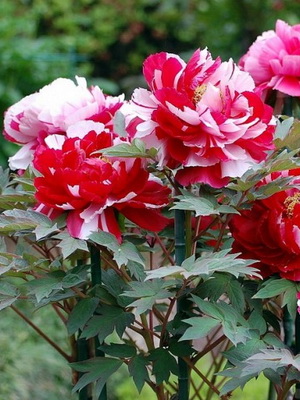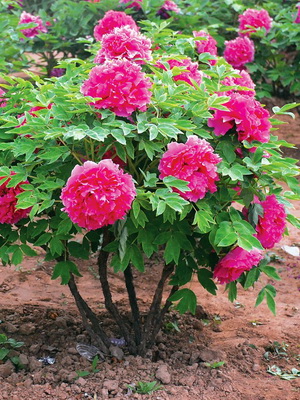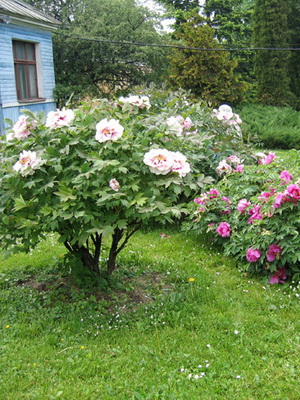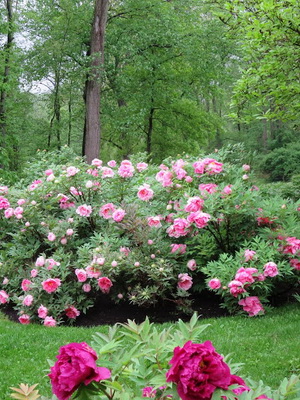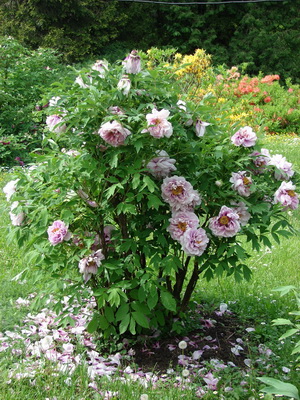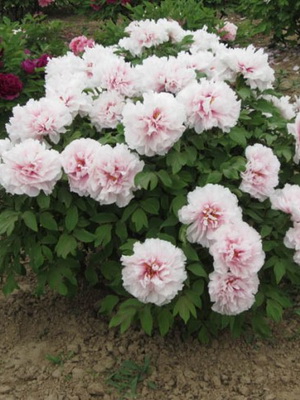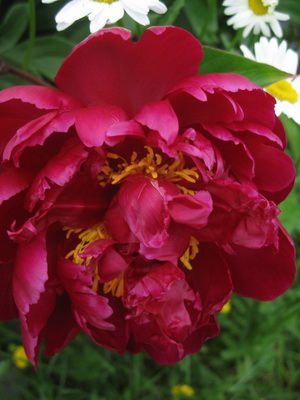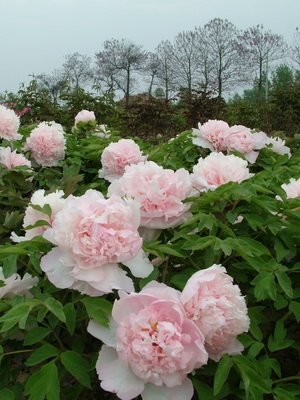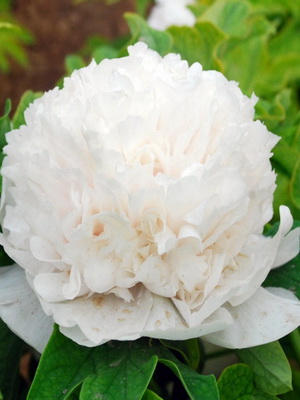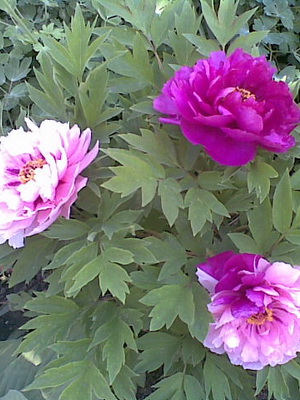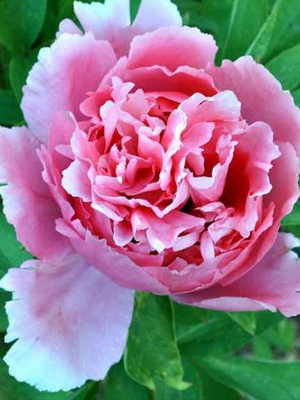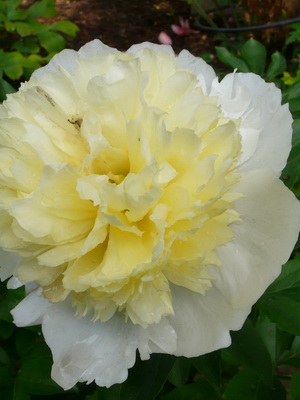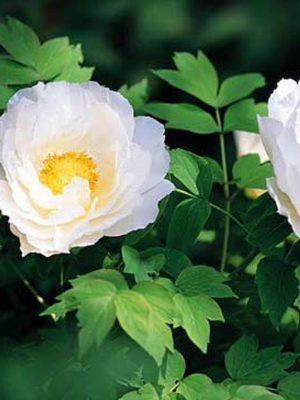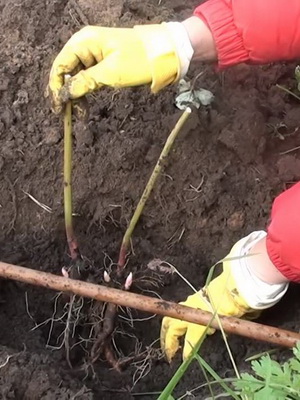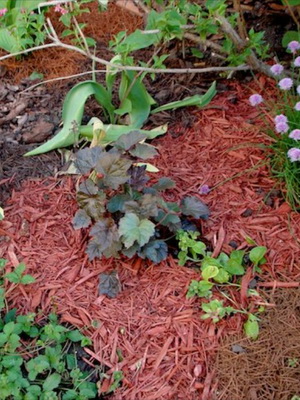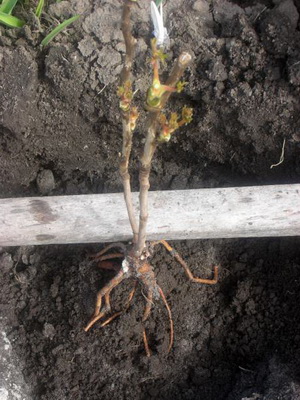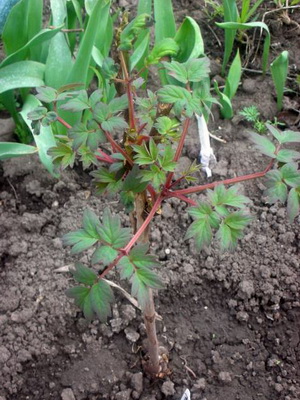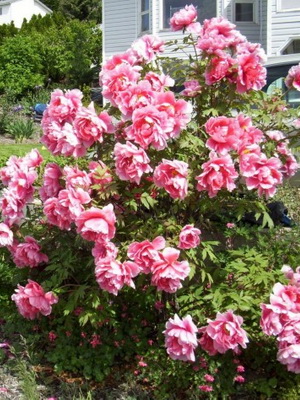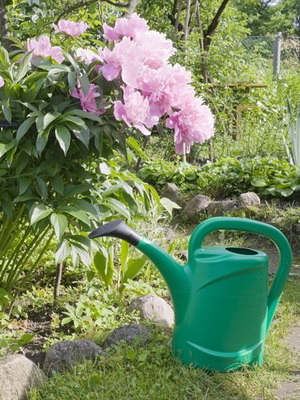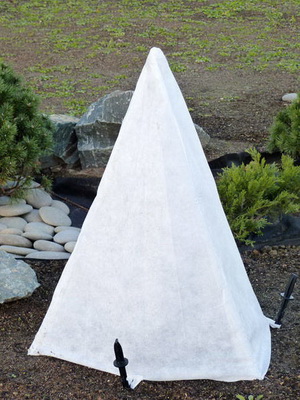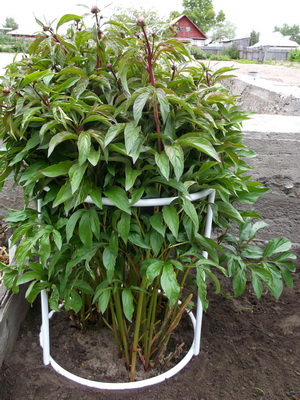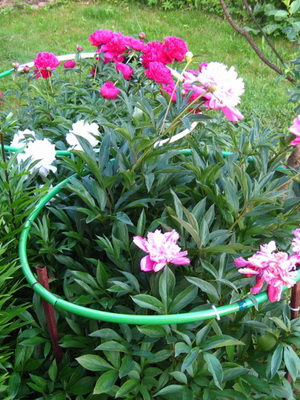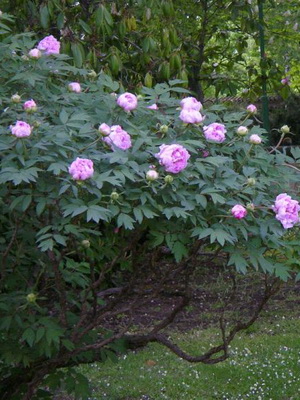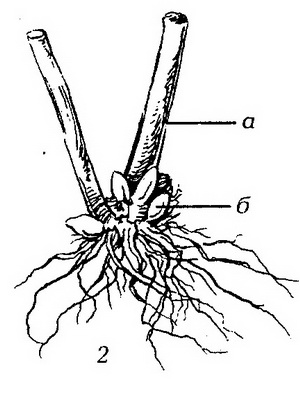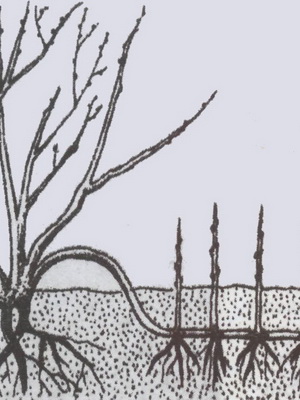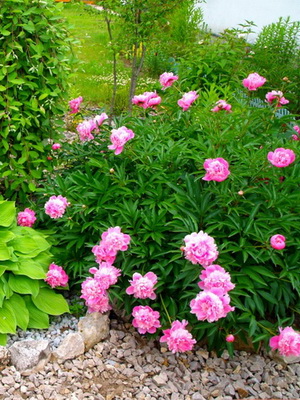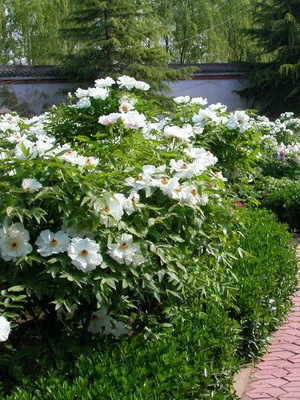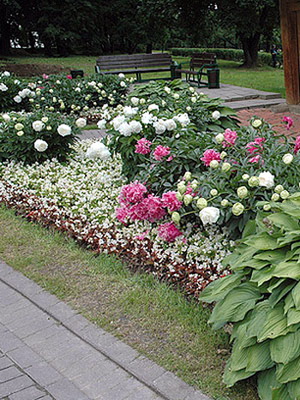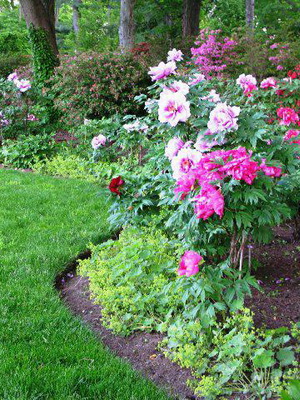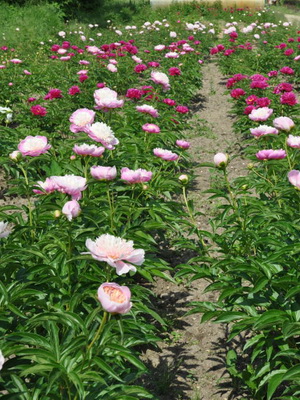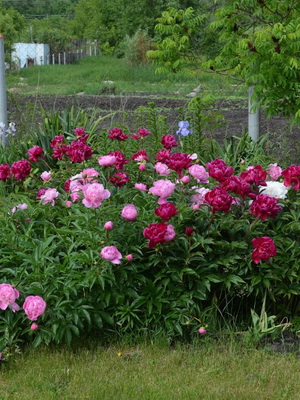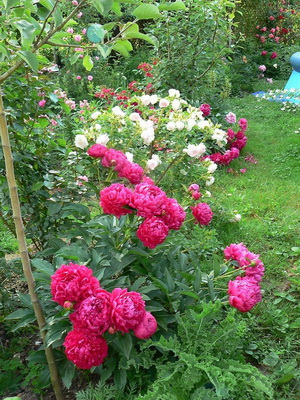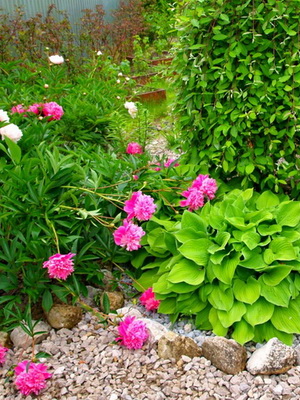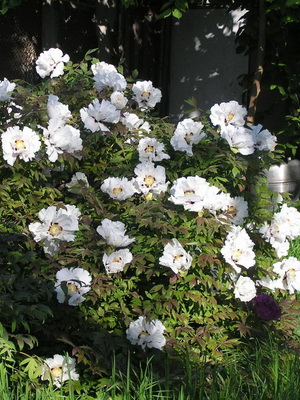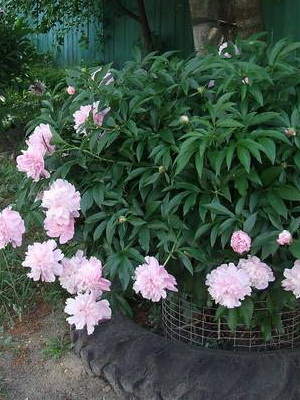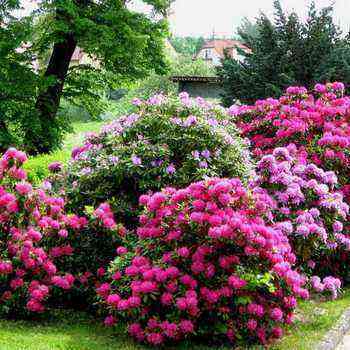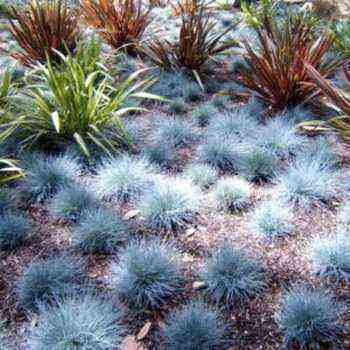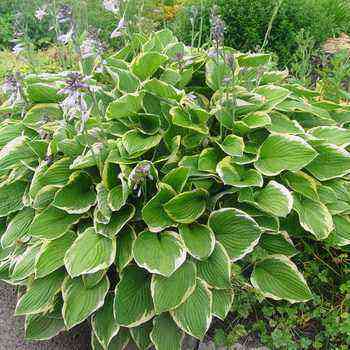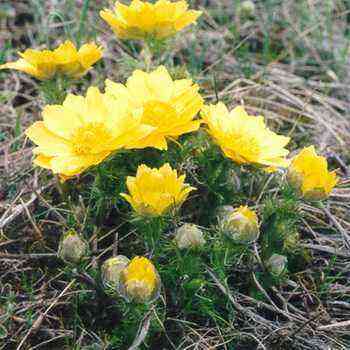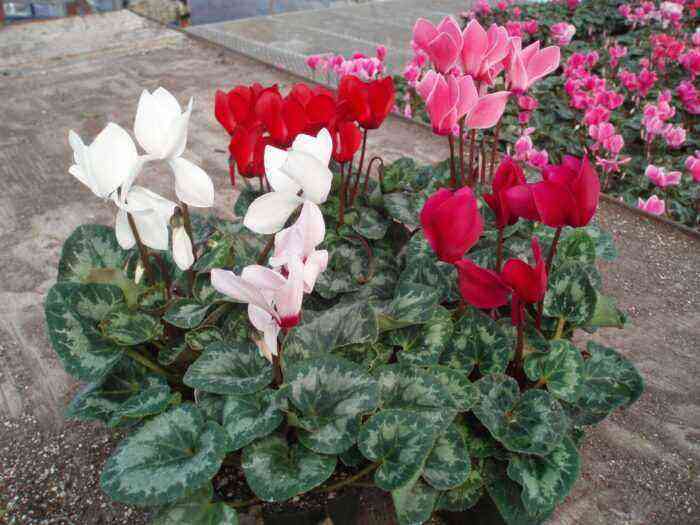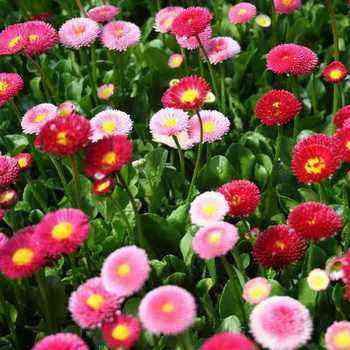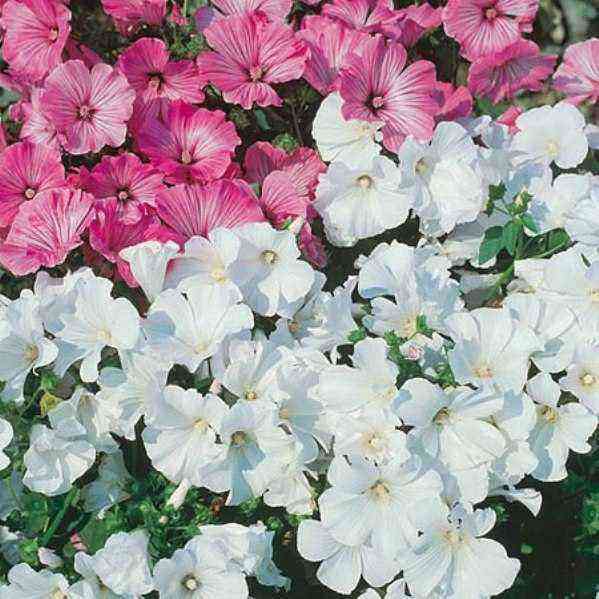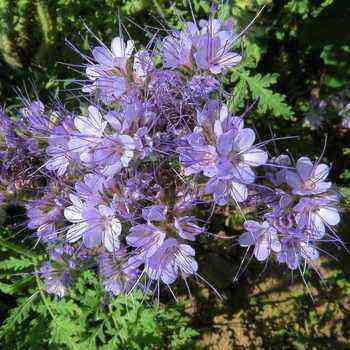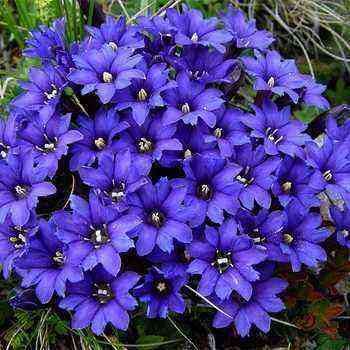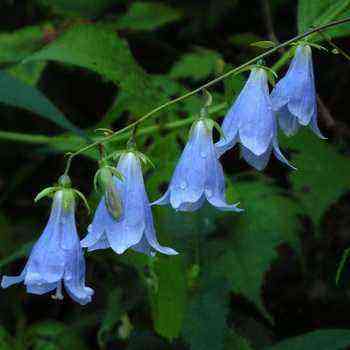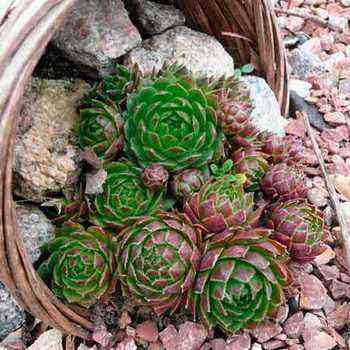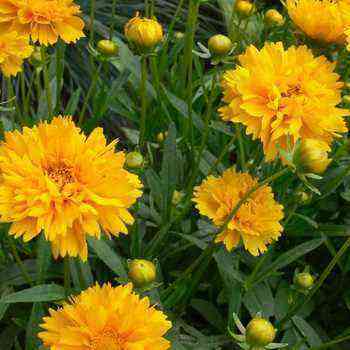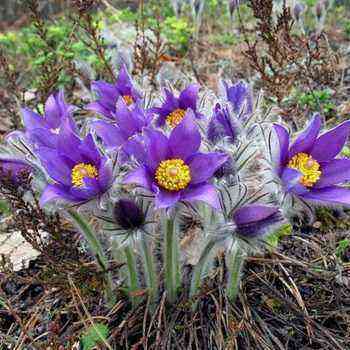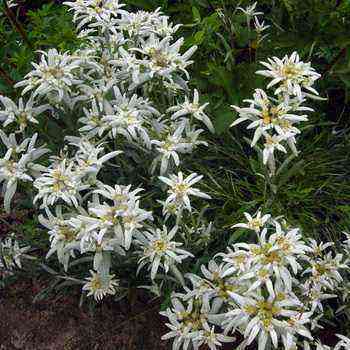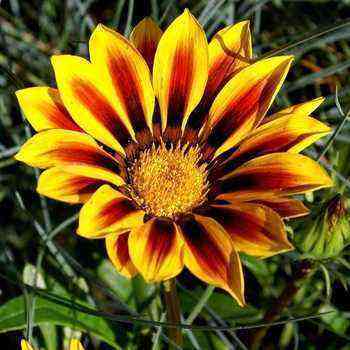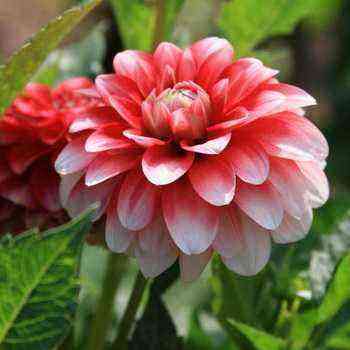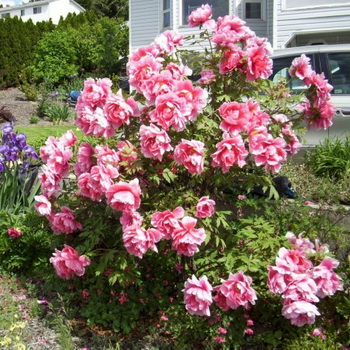
Before trying to grow a tree peony on your own, it is important to understand what kind of plant it is and what its specifics are. This is a bush with leaves falling in autumn, the height of which, depending on the variety, varies in the range of 1-2 m. The stems have a soft brown color, are not subject to dying off in autumn.
The plant is characterized by the presence of openwork, feathery leaves, large inflorescences with a diameter of 12-20 cm. Flowers are:
- terry and simple;
- one- and two-color.
The number of buds on the bushes increases with the “maturation” of the plant. The color appears in May – June, lasts from 2 to 3 weeks in a row. To understand what a garden tree peony looks like, pay attention to the photos below:
What tree peonies of different varieties look like: photos, names and descriptions
The homeland of these flowers is China. On the territory of this country, thanks to the work of breeders, a huge number of original plant variations have been artificially bred. The differences between them are in the shades of the buds, the degree of their doubleness, the level of frost resistance. Below is information about some of the popular varieties of tree peonies with photos and official names:
“Sapphire”: Called the king of the gardens. The shrub reaches a height of 1.2 m. The leaves are large, the inflorescences are large (about 18 cm). Flowers appear in June. They have a pink tint, and the center is colored crimson. The tree peony of this variety blooms very profusely – up to 50 fragrant buds appear on one bush.
Deep Blue Sea: This plant can grow up to about 1.5 m in height. Its specificity is that the castings remain green until mid-autumn. The color appears in mid-June and lasts about 14 days. The description of the inflorescences of the tree peony of this variety is as follows: diameter – about 17 cm, shade – purple-red, the number on the bush – up to 50 pieces.
“Snow Pagoda”: shrubbery can reach a height of one and a half meters. It begins to bloom from mid-June. Fits well into various landscape compositions with contrasting shades. The description and photo of flowers of this variety of tree peonies confirms what has been said. Feel for yourself the ideal beauty of these white and soft creamy buds, reaching a diameter of 16 cm, capable of bringing a touch of freshness to any “green corner”.
“Sisters Kiao”: grows up to 1.3 m in height. Blooms throughout June. Belongs to the category “the best varieties of tree peonies”, because it surprises with its unique color: one half of the bud is painted in creamy white, and the other – in purple-red. Inflorescences are large in diameter – at least 16 cm. Ideal for single and group planting.
“Coral Altar”: the height of the bush is about one and a half meters. The flowering period is in June. Make sure with the help of a photo that the tree-like peony of this variety really looks like a coral: the flowers are crown-shaped, painted in salmon-white shades, large ones have a 20-centimeter diameter.
“Primavera”: is one of the oldest varieties with a history spanning over a century. It blooms in May (the name is translated from Italian as “spring”). Check out the description of the tree peony and make sure of its uniqueness with the help of a photo: buds 20-25 cm in diameter with a delicate color – a yellow core and white petals – are slightly similar to daffodils.
Let the description of varieties of tree peonies presented above help you choose the best decoration for your garden and inspire you to create your own landscape masterpieces.
How to properly plant a decorative tree peony
How and when exactly to plant a tree-like peony is a question that interests every gardener, who for the first time decided to diversify his plot with such an ornamental plant. Planting time is determined by what type of seedling was purchased:
- with a bare rhizome (i.e., with open roots);
- with a closed rhizome (growing in a container in a substrate).
Those seedlings with closed roots can be planted in the ground in both spring and autumn. When planted in spring, flowering occurs in the same season.
If the bark system is open, then such tree-like peonies, like all herbaceous ones, are planted in the soil in August – September. Only here’s the bad luck: the seedlings go on sale not at this time, but in early spring or even in February. Of course, you can buy peonies at this time. In skillful hands, they will hold out until they land in the ground and take root. But plants from such seedlings most often get sick and lag behind in development, and the color appears much later. This is due to the fact that small roots are not yet formed on completely bare roots, intended for the absorption of nutrients. For their formation, the shrub must remain in the ground at low “plus” temperature indicators. Therefore, it is worth purchasing tree peonies in winter and spring with an open root system only if a very rare variety has turned up.
If, nevertheless, you bought a seedling with a bare rhizome in the spring, before planting a tree-like peony in open soil, you must follow the so-called “intermediate planting” – that is, in a container – and leave the flower until autumn:
- It is necessary to take a container, the volume of which is at least 5 liters, and the bottom has holes for water drainage, put drainage in it, and then fill it with non-acidic soil. After the seedling is placed in it.
- In the spring months, the cultivation of a tree peony seedling is recommended to be carried out on the balcony or in the basement, where the air temperature will be “positive”, but close to 0 ̊С. Watering will need to be sparse, only in order to prevent the soil from drying out. The seedling should not be allowed to grow, because the suction roots will not be able to form.
- When the shoots reach a height of 15 to 20 cm, the plant should be transferred to a well-lit room, but just as cool. Growing a tree peony seedling requires the following care: watering must be kept to a minimum, and if the first leaves appear, you should immediately treat the peony with “Fevorit”.
- With the arrival of the summer season, it is recommended to take the seedling out to a cool corner of the garden, but protected from drafts and direct sunlight.
- During August – September, it can be moved to a place of stable growth.
For this plant, you need to choose places protected from the wind. The optimal planting for tree peony bushes is next to conifers, it is also advantageous from an aesthetic point of view. It is performed using the following technology:
A hole for the plant must be dug 14 days before planting so that the soil settles well.
Planting pit parameters: depth – 50 cm, diameter – 40 cm, distance between several pits – from 1 to 1.5 m.
The bottom should be laid out with expanded clay, sand or gravel drainage, the optimal layer thickness of which is from 20 to 30 cm.
It is recommended to take non-acidic soil, stir in peat or compost + humus + sand (in a ratio of 1: 1: 1). The addition of 0.2 to 0.4 kg of bone meal is also allowed.
All buds that appear on the seedling must be removed. To understand how to properly prune a tree peony before planting, watch the video below.
Part of the previously prepared soil must be poured onto the drainage. If the seedling was with a closed rhizome, it is transplanted with a clod of earth, and if with an open one, the roots are carefully spread over a layer of earth and watered with 4 or 5 liters of clean water. After absorbing the liquid, the rest of the soil is poured into the pit and compacted (not very tightly). It is necessary to ensure that the root collar of the bush is located flush with the ground.
The final stage is mulching the plant using peat or humus while deepening the root collar by 4-5 cm.
You can immediately fertilize the bush by adding superphosphate to the soil mixture or liquid fertilizer to the water for irrigation. How to plant a tree peony step by step, look at the presented photos:
How to grow tree peonies and how to care for them
When growing peonies, the following rules must be observed. These flowers require abundant watering in the spring and just before flowering, if the soil is slightly moistened. Otherwise, moderate watering is required. During the summer, its intensity should be reduced, and in August it should be stopped altogether so that the wood has the opportunity to “prepare” for wintering.
When organizing proper care for a tree peony, it should be remembered that it is not recommended to water it with very cold water. It should be kept in a container where it can pre-warm up in the sun. You need to pour the liquid in portions, so it can get to the root system, and not spread on the surface of the earth.
Another important aspect of growing a plant is timely and correct feeding. In order for it to give abundant color, fertilizer should be added once every 12 days: from April until the color falls. And when planting a tree peony, and for further care for it, ash, mineral supplements with predominant potassium and phosphorus components, and bone meal are widely used as top dressing. This will at the same time prevent the development of diseases in the plant.
In general, diseases do not bypass peonies. The biggest problem is root and foliage rot. At the first signs (spots on the leaves, sporulation, bronze color of the leaves, etc.), it is necessary to apply fungicides.
Every plant breeder who cares about the condition of his garden is interested in how to care for a tree peony, preparing it for winter. With the wintering of tree peonies, things are like this. Young plants that are completely covered by snow are not afraid of anything. In principle, when there is a nice snowy winter with moderate temperatures, tree peonies do not suffer. But in severe frosts, parts of the plant that are above the level of the snow cover may freeze out. Therefore, in October, it is recommended to mulch the soil with a bucket of peat or the same amount of humus per bush, cut off the leaves by two-thirds of the plant’s length and cover the bushes with special material, leaving holes for air to enter. A shelter for large bushes is constructed as follows: a hut is made from sticks, which is wrapped in lutrasil or covered with spruce branches.
In mild winters, plants under cover can be affected by fungal diseases. You can do without shelter, because winters that are really critical for tree peonies happen here once every ten years.
In addition, under the weight of the snow, the bushes of tree-like peonies sometimes break. Therefore, it is better to tie large specimens. How to properly perform care and tie up a tree peony is clearly demonstrated by the photo:
If at the end of winter there are frozen buds on the bushes, then you should not remove them immediately. If they cannot recover at the beginning of June, then it is worth pruning the frozen shoots to the first active bud. As the photo below testifies, tree peonies, planting and caring for which are organized correctly, give abundant color to lush buds – appreciate their magnificence and unsurpassed.
Methods for propagating peonies by seeds and cuttings
Despite the fact that the seedlings of this luxurious plant are inexpensive, many amateur gardeners practice reproduction of the tree-like peony growing on the site on their own. There are several ways to accomplish this procedure:
- Seeds: This option is often used by breeders, since it takes a long time to germinate. Seeds must undergo double stratification, that is, stay two winters in a row in the ground, in the natural environment. After the first wintering, a root system is formed in them, and only after the second, stems and leaves appear. The first color appears 4 or 5 years after sowing. If a tree-like peony species grows in your garden, in order to propagate it by seeds, it is enough to leave a few seed heads, allowing the seeds from them to spill out into the ground after final ripening. You can also pre-collect and sow them in the area of the site in which you need. Planting sites should in any case be noted and watered regularly during dry periods, despite the lack of seedlings.
- Cuttings: this option is also considered simple, but not effective enough. The procedure should begin in late spring – early summer. It is necessary to select parts of the shoot that have a bud and a leaf and are only half woody, cut them off and place them in a root solution for a couple of hours. Then you should plant the cuttings in a box filled with a mixture of sand and peat in a 1: 1 ratio, covered with a film. Planting depth – 1.5 cm, angle – 45 ̊. Rooting will occur only by mid-autumn. At this time, it is necessary to transplant them into a greenhouse for wintering. It is necessary to plant a tree-like peony, which was propagated by cuttings, in open ground in the spring. The color will appear around the 5th year.
How to propagate tree peonies by division, layering and grafting
It is fashionable to propagate peonies in other ways:
Dividing the bush: this method is included in the list of the least difficult and most effective. But if the choice falls on him, he will have to sacrifice one mother bush, “making” several small plants from one large one. It is recommended to choose bushes for this, the age of which does not exceed 6 years, the best option is a 4-5-year-old plant with at least 7 independent stems. Before propagating a tree-like peony by dividing the bush, it must be cut to 10-15 cm in height, then dug out, washed off the soil from the roots, shaken thoroughly, and decayed and very old roots removed. Next, it is necessary to cut the rhizome into several divisions so that the root of each of them has a length of about 10 cm or more, and the stem has from 3 to 5 buds. It is recommended to treat all cut zones on the rhizome with a solution of potassium permanganate and sprinkle with a mixture of charcoal and colloidal sulfur in a 1: 1 ratio. The cuttings prepared in this way must be planted immediately in the ground and flowering can be expected in two years.
By layering: the named method is also among the simple ones, like all the previous ones, but at the same time it is unproductive. You need to dig in the layers at the end of spring, until flowering begins. For this procedure, the shoot that is closest to the soil is suitable. At the very bottom, you need to make a small incision on it, which is processed with a root. After that, the layering must be leaned against the soil and covered with a 10-centimeter layer of soil. The task of the gardener is to carefully ensure that the earth does not dry out. Rooting will take place somewhere closer to September – then it can be cut off from the mother bush and transplanted into the selected area of the garden. The reproduction of a tree peony by layering is clearly shown in the video:
Vaccinations: this option is the most troublesome and associated with a serious investment of time. Most often, the rootstock is the roots of herbaceous peonies, and the scion is the young shoots of tree-like ones. It is necessary to sharpen the scion in a wedge, and cut a hole in the required shape in the rootstock. It is also possible to carry out the vaccination from the side. To do this, it is required to cut off both the stock and the scion at a slight angle, and then connect them and firmly fix them with polyethylene or electrical tape (the adhesive surface is outward). When wondering how to grow a grafted tree-like peony, you need to take into account that the plants grow together for 1 month, then they should be grown in a greenhouse for 2 years.
Since tree peonies reproduce by grafting, cuttings, layering, seeds and dividing the bush, then any gardener has the opportunity to choose the most convenient way for himself or to experiment with everyone.
The use of tree peonies in landscape design
Growing a tree-like peony, amateur and professional gardeners versed in landscape design use the plant both as a component of original “live” flower arrangements, and as a bright, self-sufficient single decoration of their own plot.
If there is a desire to plant one bush, it should be borne in mind that it will look most successful on a spacious, open area of the backyard area. Low, small, discreet flowers can be placed around it, or the entire lawn can be sown with decorative grass. How a single tree-like peony looks on a juicy green “carpet”, evaluate in the photo.
If you are thinking about how to organize a group planting of plants to decorate your site, then pay attention to the recommendations of specialists:
You can use several varieties of tree peony to create a flower garden composition at the same time, planting them in one row. They will make an original lush hedge.
A very popular method of alternating them with other shrubs about 1.5 m high – hydrangea, Japanese spirea. How luxurious a tree peony looks surrounded by these flowers, look at the photos below.
Peonies look gorgeous in the “heart” of the site, if along its edges are additionally planted in even rows of flowers, the shades of which represent the same color palette as the shade of the peonies.
To create flower beds, it is important to use plants, the flowering period of which coincides with the period of the appearance of color in the tree peony. If the latter blooms in spring, tulips can make an ideal tandem with it, but if in June, then nigella, nasturtiums, daisies, petunias will become excellent “neighbors” for it. Appreciate the uniqueness and beauty that the tree-like peony, called the “imperial flower”, creates in the landscape design in the photos below.
An interesting solution is to decorate the flower bed with decorative stones, which turns the flower garden into a real creative masterpiece.
In order to avoid mistakes in the design of your site, it is better to draw the future composition on a piece of paper with precision to the smallest detail, and then proceed with its implementation. Growing this plant is a very simple and rather interesting activity, and the result can be truly great pleasure.
